

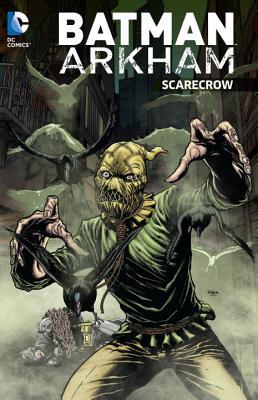
Books in series

Batman Arkham
The Riddler
2015

Batman
Arkham: Two-Face (Batman
2015

Batman Arkham
Scarecrow
2016

Batman
Arkham: Killer Croc
2016

Batman Arkham
Poison Ivy
2016

Batman Arkham
Mister Freeze (Batman
2017
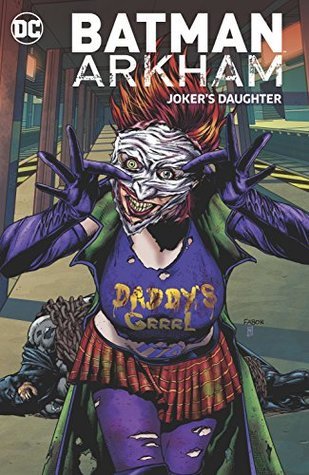
Batman Arkham
Joker's Daughter
2017

Batman Arkham
Hugo Strange
2018

Batman Arkham
Penguin
2018
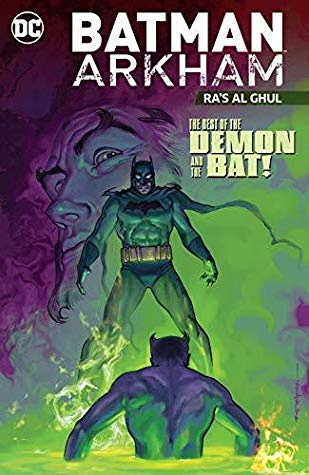
Batman
Arkham Ra's Al Ghul
2019
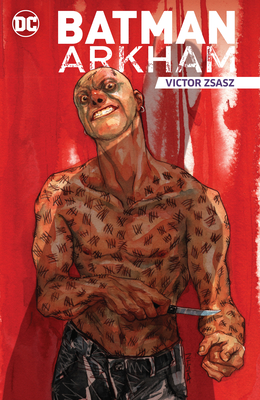
Batman Arkham
Victor Zsasz
2020
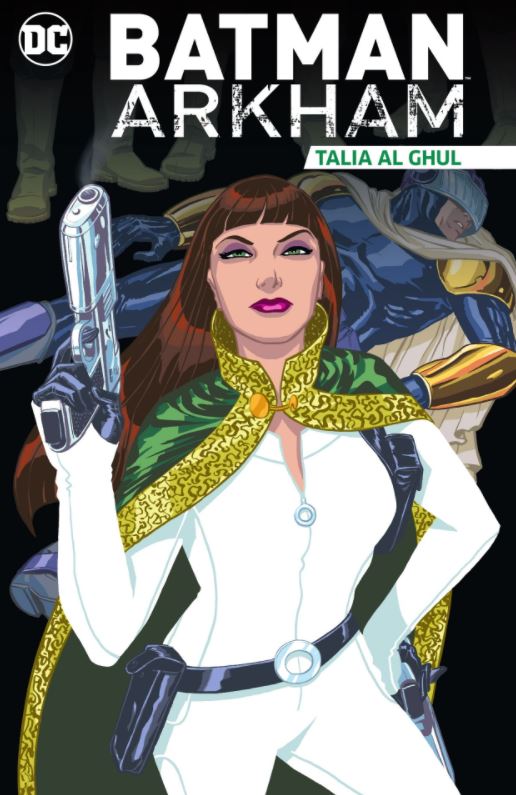
Batman Arkham
Talia Al Ghul
2021
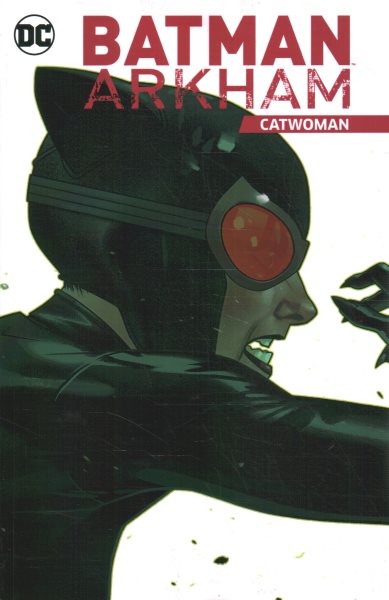
Batman Arkham
Catwoman
2021
Authors

Len Wein was an American comic book writer and editor best known for co-creating DC Comics' Swamp Thing and Marvel Comics' Wolverine, and for helping revive the Marvel superhero team the X-Men (including the co-creation of Nightcrawler, Storm, and Colossus). Additionally, he was the editor for writer Alan Moore and illustrator Dave Gibbons' influential DC miniseries Watchmen. Wein was inducted into the Will Eisner Comic Book Hall of Fame in 2008.


Derek Fridolfs has worked professionally as an writer, inker, cover & sequential artist for DC, Marvel, Dark Horse, Boom, IDW, and a majority of comic companies the past 20 years.
1 New York Times Best Selling Writer for the DC Secret Hero Society book series through SCHOLASTIC. And Eisner Nominated co-writer of Batman: Li'l Gotham at DC.
He's also written for such titles as Adventure Time, Regular Show, Clarence, Looney Tunes, Scooby-Doo, Teen Titans Go!, Dexter's Laboratory, Teenage Mutant Ninja Turtles: The New Animated Adventures, Batman Arkham City, Batman Arkham Unhinged, Adventures Of Superman, Sensation Comics Wonder Woman, Justice League Beyond and many more.


Peter J. Tomasi is an American comic book writer, best known for his work for DC Comics, such as Batman And Robin; Superman; Super Sons; Batman: Detective Comics; Green Lantern Corps; and Superman/Wonder Woman; as well as Batman: Arkham Knight; Brightest Day; Green Lantern: Emerald Warriors; Nightwing; Black Adam, and many more. In the course of his staff career at DC Comics, Tomasi served as a group editor and ushered in new eras for Batman, Green Lantern, and the JSA, along with a host of special projects like Kingdom Come. He is also the author of the creator-owned titles House Of Penance with artist Ian Bertram; Light Brigade with artist Peter Snejbjerg; The Mighty with Keith Champagne and Chris Samnee; and the critically acclaimed epic graphic novel The Bridge: How The Roeblings Connected Brooklyn To New York, illustrated by Sara DuVall and published by Abrams ComicArts. In 2018 New York Times best-selling author Tomasi received the Inkpot Award for achievement in comics.


Marshall Rogers studied architectural drawing, and his work was characterized by the depiction of characters with relatively human proportions rather than exaggerated musculature, and by detailed rendering of buildings and structures. Some of his first comic-book work appeared in the black-and-white magazine The Deadly Hands of Kung Fu, where he worked with writer Chris Claremont on a story featuring the "Iron Fist" supporting characters Misty Knight and Colleen Wing as the Daughters of the Dragon. He eschewed the grey wash that was used in other black-and-white comics stories in favour of applying screentone. With writer Steve Englehart, Rogers penciled an acclaimed run on the character Batman in Detective Comics #471-476 (Aug. 1977 - April 1978), providing one of the definitive interpretations that influenced the 1989 movie Batman and be adapted for the 1990s animated series. He also penciled the origin story of the Golden Age Batman in Secret Origins #6 (Sept. 1986) with writer Roy Thomas and inker Terry Austin. The two also did a sequel miniseries, Batman: Dark Detective, and had worked together on other series, such as The Silver Surfer. Also striking was Rogers' short run on DC's revived "Mister Miracle" series. Englehart and Rogers' first Batman run was collected in the trade paperbacks Batman: Strange Apparitions and the second run, Batman: Dark Detective. He did independent work at Eclipse Comics and others. This included the first Coyote series with Englehart, and his own Capt. Quick and the Foozle. Portrait by: Marshall Rogers

One of the most prolific writers in comics, particularly in the Silver Age. He took over scripting duties on Wonder Woman after William Moulton Marston's death, and handled the character's transition from the Golden to the Silver Age. He also created Barry Allen, the second Flash, for editor Julius Schwartz's superhero revival of 1956, as well as writing and editing DC's pioneering war titles. His creations include Sgt. Rock, the Unknown Soldier, Barry Allen, Ragman, the Losers, Black Canary, the Metal Men, Poison Ivy, Enemy Ace, the Suicide Squad, and Rex the Wonder Dog.



Charles "Chuck" Dixon is an American comic book writer, perhaps best-known for long runs on Batman titles in the 1990s. His earliest comics work was writing Evangeline first for Comico Comics in 1984 (then later for First Comics, who published the on-going series), on which he worked with his then-wife, the artist Judith Hunt. His big break came one year later, when editor Larry Hama hired him to write back-up stories for Marvel Comics' The Savage Sword of Conan. In 1986, he began working for Eclipse Comics, writing Airboy with artist Tim Truman. Continuing to write for both Marvel and (mainly) Eclipse on these titles, as well as launching Strike! with artist Tom Lyle in August 1987 and Valkyrie with artist Paul Gulacy in October 1987, he began work on Carl Potts' Alien Legion series for Marvel's Epic Comics imprint, under editor Archie Goodwin. He also produced a three-issue adaptation of J. R. R. Tolkien's The Hobbit for Eclipse with artist David Wenzel between 1989 and 1990, and began writing Marc Spector: Moon Knight in June 1989. His Punisher OGN Kingdom Gone (August, 1990) led to him working on the monthly The Punisher War Journal (and later, more monthly and occasional Punisher titles), and also brought him to the attention of DC Comics editor Denny O'Neil, who asked him to produce a Robin mini-series. The mini proved popular enough to spawn two sequels - The Joker's Wild (1991) and Cry of the Huntress (1992) - which led to both an ongoing monthly series (which Dixon wrote for 100 issues before leaving to work with CrossGen Comics), and to Dixon working on Detective Comics from #644-738 through the major Batman stories KnightFall & KnightsEnd (for which he helped create the key character of Bane), DC One Million, Contagion, Legacy, Cataclysm and No Man's Land . Much of his run was illustrated by Graham Nolan. He was DC's most prolific Batman-writer in the mid-1990s (rivalled perhaps in history by Bill Finger and Dennis O'Neil) - in addition to writing Detective Comics he pioneered the individual series for Robin, Nightwing (which he wrote for 70 issues, and returned to briefly with 2005's #101) and Batgirl, as well as creating the team and book Birds of Prey . While writing multiple Punisher and Batman comics (and October 1994's Punisher/Batman crossover), he also found time to launch Team 7 for Jim Lee's WildStorm/Image and Prophet for Rob Liefeld's Extreme Studios. He also wrote many issues of Catwoman and Green Arrow, regularly having about seven titles out each and every month between the years 1993 and 1998. In March, 2002, Dixon turned his attention to CrossGen's output, salthough he co-wrote with Scott Beatty the origin of Barbara Gordon's Batgirl in 2003's Batgirl: Year One. For CrossGen he took over some of the comics of the out-going Mark Waid, taking over Sigil from #21, and Crux with #13. He launched Way of the Rat in June 2002, Brath (March '03), The Silken Ghost (June '03) and the pirate comic El Cazador (Oct '03), as well as editing Robert Rodi's non-Sigilverse The Crossovers. He also wrote the Ruse spin-off Archard's Agents one-shots in January and November '03 and April '04, the last released shortly before CrossGen's complete collapse forced the cancellation of all of its comics, before which Dixon wrote a single issue of Sojourn (May '04). Dixon's Way of the Rat #24, Brath #14 and El Cazador #6 were among the last comics released from the then-bankrupt publisher. On June 10, 2008, Dixon announced on his forum that he was no longer "employed by DC Comics in any capacity."

See also John Harkness. Steve Englehart went to Wesleyan University in Middletown, Connecticut. After a stint in the Army, he moved to New York and began to write for Marvel Comics. That led to long runs on Captain America, The Hulk, The Avengers, Dr. Strange, and a dozen other titles. Midway through that period he moved to California (where he remains), and met and married his wife Terry. He was finally hired away from Marvel by DC Comics, to be their lead writer and revamp their core characters (Superman, Batman, Wonder Woman, Flash, and Green Lantern). He did, but he also wrote a solo Batman series (immediately dubbed the "definitive" version) that later became Warner Brothers' first Batman film (the good one). After that he left comics for a time, traveled in Europe for a year, wrote a novel (The Point Man™), and came back to design video games for Atari (E.T., Garfield). But he still liked comics, so he created Coyote™, which within its first year was rated one of America's ten best series. Other projects he owned (Scorpio Rose™, The Djinn™) were mixed with company series (Green Lantern [with Joe Staton], Silver Surfer, Fantastic Four). Meanwhile, he continued his game design for Activision, Electronic Arts, Sega, and Brøderbund. And once he and Terry had their two sons, Alex and Eric, he naturally told them stories. Rustle's Christmas Adventure was first devised for them. He went on to add a run of mid-grade books to his bibliography, including the DNAgers™ adventure series, and Countdown to Flight, a biography of the Wright brothers selected by NASA as the basis for their school curriculum on the invention of the airplane. In 1992 Steve was asked to co-create a comics pantheon called the Ultraverse. One of his contributions, The Night Man, became not only a successful comics series, but also a television show. That led to more Hollywood work, including animated series such as Street Fighter, GI Joe, and Team Atlantis for Disney.

William "Bill" Finger was an American comic strip and comic book writer best known as the uncredited co-creator, with Bob Kane, of the DC Comics character Batman, as well as the co-architect of the series' development. In later years, Kane acknowledged Finger as "a contributing force" in the character's creation. Comics historian Ron Goulart, in Comic Book Encyclopedia, refers to Batman as the "creation of artist Bob Kane and writer Bill Finger", and a DC Comics press release in 2007 about colleague Jerry Robinson states that in 1939, "Kane, along with writer Bill Finger, had just created Batman for [DC predecessor] National Comics". Film and television credits include scripting The Green Slime (1969), Track of the Moon Beast (1976), and three episodes of 77 Sunset Strip. -Wikipedia

Doug Moench, is an American comic book writer notable for his Batman work and as the creator of Black Mask, Moon Knight and Deathlok. Moench has worked for DC Comics, Marvel Comics, Dark Horse Comics and many other smaller companies; he has written hundreds of issues of many different comics, and created dozens of characters, such as Moon Knight. In 1973, Moench became the de facto lead writer for the Marvel black-and-white magazine imprint Curtis Magazines. He contributed to the entire runs of Planet of the Apes, Rampaging Hulk (continuing on the title when it changed its name to The Hulk!) and Doc Savage, while also serving as a regular scribe for virtually every other Curtis title during the course of the imprint's existence. Moench is perhaps best known for his work on Batman, whose title he wrote from 1983–1986 and then again from 1992–1998. (He also wrote the companion title Detective Comics from 1983–1986.) Moench is a frequent and longtime collaborator with comics artist Paul Gulacy. The pair are probably best known for their work on Shang-Chi: Master of Kung Fu, which they worked on together from 1974–1977. They also co-created Six from Sirius, Slash Maraud, and S.C.I. Spy, and have worked together on comics projects featuring Batman, Conan the Barbarian and James Bond. Moench has frequently been paired with the artist and inker team of Kelley Jones and John Beatty on several Elseworlds Graphic Novels and a long run of the monthly Batman comic.

Dennis "Denny" O'Neil was a comic book writer and editor best known for his work for Marvel Comics and DC Comics from the 1960s through the 1990s, and Group Editor for the Batman family of titles until his retirement. His best-known works include Green Lantern/Green Arrow and Batman with Neal Adams, The Shadow with Michael Kaluta and The Question with Denys Cowan. As an editor, he is principally known for editing the various Batman titles. From 2013 unti his death, he sat on the board of directors of the charity The Hero Initiative and served on its Disbursement Committee.

Librarian note: There is more than one author in the GoodReads database with this name Peter Milligan is a British writer, best known for his work on X-Force / X-Statix, the X-Men, & the Vertigo series Human Target. He is also a scriptwriter. He has been writing comics for some time and he has somewhat of a reputation for writing material that is highly outlandish, bizarre and/or absurd. His highest profile projects to date include a run on X-Men, and his X-Force revamp that relaunched as X-Statix. Many of Milligan's best works have been from DC Vertigo. These include: The Extremist (4 issues with artist Ted McKeever) The Minx (8 issues with artist Sean Phillips) Face (Prestige one-shot with artist Duncan Fegredo) The Eaters (Prestige one-shot with artist Dean Ormston) Vertigo Pop London (4 issues with artist Philip Bond) Enigma (8 issues with artist Duncan Fegredo) and Girl (3 issues with artist Duncan Fegredo). Series: * Human Target * Greek Street * X-Force / X-Statix
